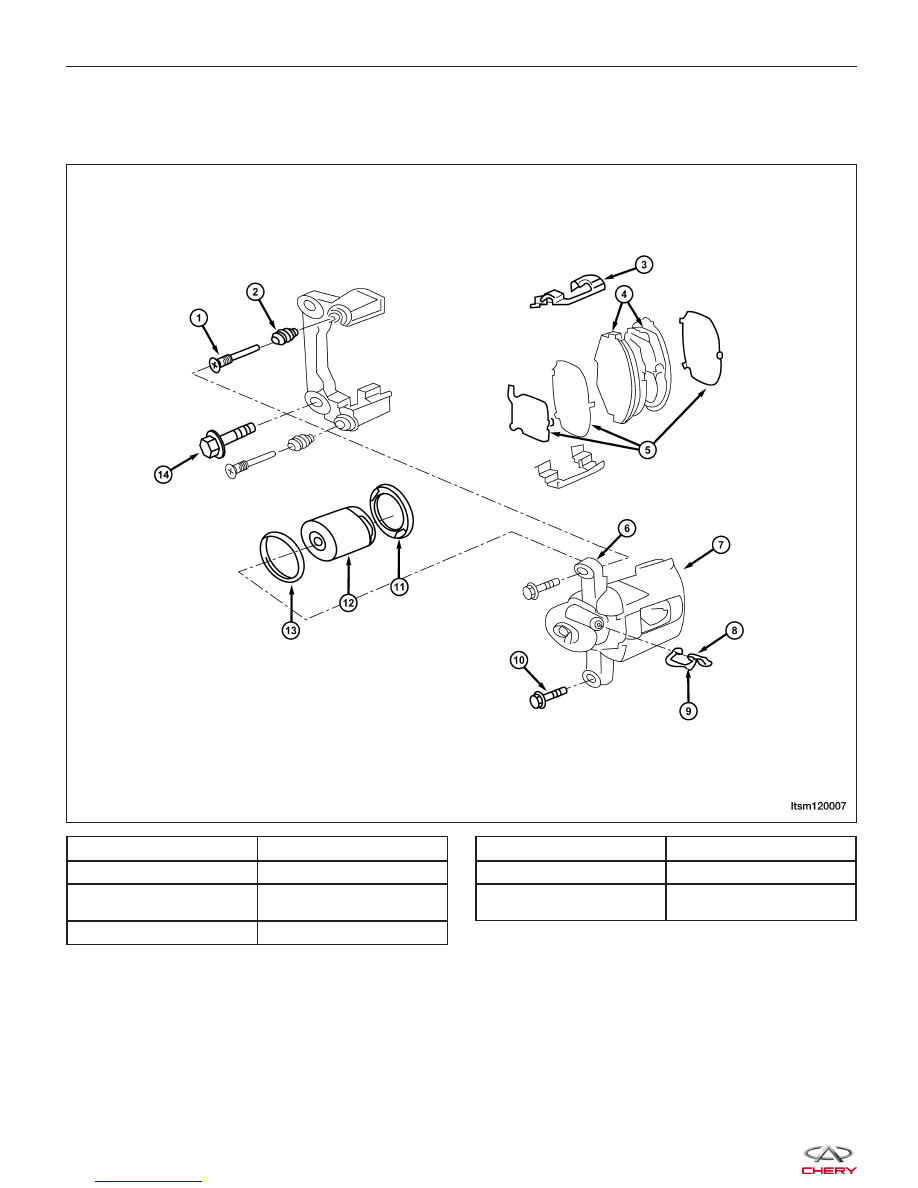Chery Tiggo. Manual - part 354

Front Brake Caliper
Description
The calipers are a single piston type. The calipers are free to slide laterally on the anchor, this allows continuous
compensation for lining wear. The calipers are directly bolted to the wheel hub with mounting bolts. The brake rotor
dust shield is mounted to the hub.
Operation
When the brakes are applied, fluid pressure is exerted against the caliper piston. The fluid pressure is exerted
equally and in all directions. This means pressure exerted against the caliper piston and within the caliper bores will
be equal. Fluid pressure applied to the pistons is transmitted directly to the inboard brake pad. This forces the pad
1 - Locating Guide Rod
5 - Lining Damper
2 - Dust Cap
6 - Brake Caliper Bracket
3 - Brake Gasket
7 - Brake Caliper Body
Connecting Bolt
4 - Brake Lining Assembly
8 - Bleeding Screw
9 - Dust Cover
12 - Piston
10 - Brake Caliper
13 - Piston Seal
11 - Piston Dust Cap
14 - Brake Caliper Bracket
Bolt
ON-VEHICLE SERVICE
LTSM120007